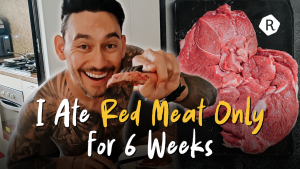What food do you love with an undying passion? Pen your own love letter (50 words or less) and tell us how much you love it (send to community@ricemedia.co).
If we are swayed by your arguments and/or lyricism, we will publish your work and send you a ChopeDeals voucher worth $100.
The perfect fried chicken meal should contain 2 large pieces, a carb-heavy side, and an ice-cold drink.
The chicken should be between warm to hot. Warm enough to release wisps of steam when you bite into it, but not hot enough to burn your tongue.
Lukewarm chicken that’s been dying under a heat lamp is not acceptable, and neither is boiling-temperature chicken which prevents you from tearing into it with gleeful abandon.
When the smoke clears, the meat should be as juicy as a fresh oyster—falling away in large tender chunks. It should not be stringy like pulled pork. Strands of meat should not get stuck between your teeth.

The perfect fried chicken has a skin that should induce lust like the thought of sweat-soaked bodies in a well-ventilated room. It should be thicc, golden and crispy. It should be a craggy alpine landscape of deep-fried goodness, with crispy batter peaks, ravines of fragrant fat, and ridges rich with umami. When you bite down, it should give away with a deep, resonant cruunnnnchhhhhhhhhh, followed by a squelch as the chicken tapestry unravels into fat, spice, and everything nice.
As for flavour, it’s all up to personal preference. Some prefer a Korean drumstick coated in sweet soy glaze. Others crave wingettes marinated in Har Cheong Gai paste.
There is no right or wrong answer, so long as those flavours do not overpower the chicken proper.
The same holds true for the most common cuts of fried chicken: thigh, breast/rib, and wing. Chicken fanatics will argue for the merits of wing over thigh, or denounce breast-eaters as heretics who should be burned at the stake, but their argument must not be taken seriously; every piece of deep-fried chicken is a Faustian bargain.
The wing is the most tender and flavourful, but it’s finicky to eat and contains less meat. The breast has the most meat, but it’s nowhere as tender or crispy. Your thigh is designed for easy eating, but it has less bulk than the breast and less flavor than the wing because it contains a lower skin-to-flesh ratio. Whatever your choice, you cannot win or lose.
Fried chicken is just—it does not taketh without giving, nor give without taking something away. What one loses in crispiness is gained in convenience or more chicken.
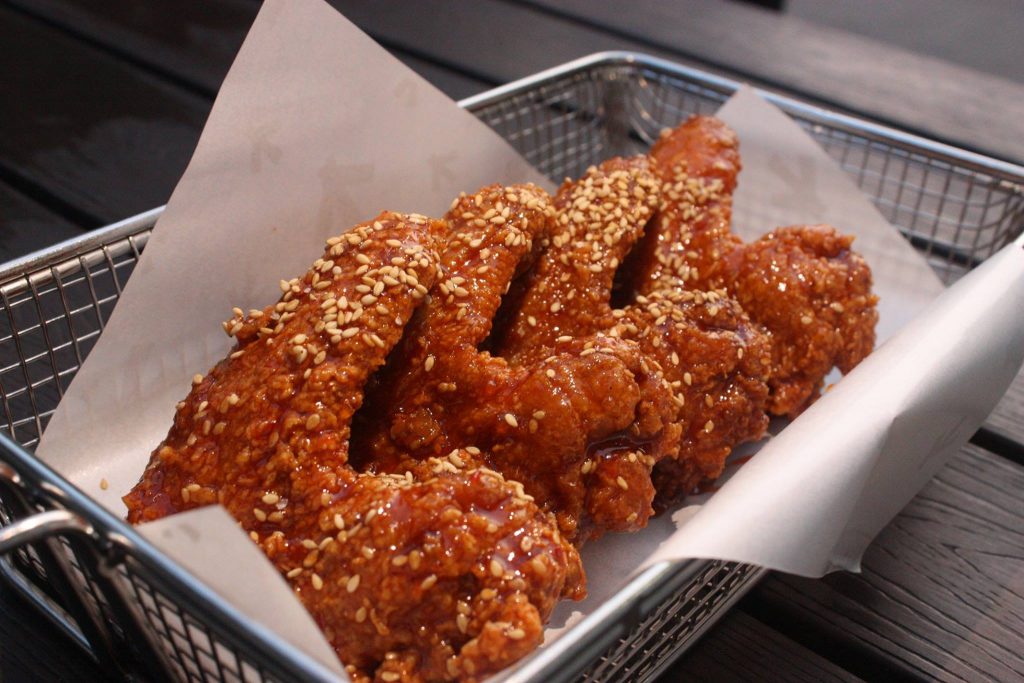
Personally, I prefer a plain, vanilla fried chicken wing, but with added heat. My platonic ideal of fried chicken should be spicy enough to have me fanning myself and reaching for a cool beverage after a few bites.
Lastly, fried chicken should be nasty. It must be eaten with your fingers, and leave a smear of grease across one’s cheeks. This is the only way to truly experience fried chicken—up-close and followed closely by a trip to the washroom sink.
As for people who eat fried chicken with a knife and fork—they should be executed by firing squad.
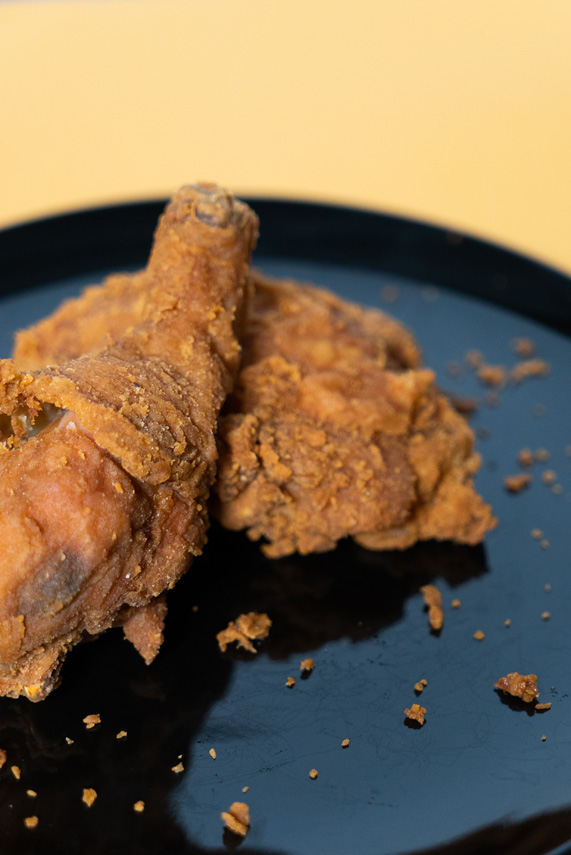
A Theory Of Fried Chicken
Everybody who can eat chicken loves fried chicken. They may avoid it for reasons of health, or because they want to appear sophisticated. But deep-down, in those deep sea caverns where one’s true self resides, they still desire fried chicken.
This is because eons of evolution have hardwired the human brain to seek out fat, salt, and protein like a tomahawk missile. Fat provides more calories than sugar or carbs, and your inner caveman instinctively prefers it over the alternatives. As for sodium and protein, they trigger the release of dopamine, the main neurotransmitter responsible for inducing pleasure.

Hence, fried chicken—which contains all of these substances in abundance and perfect proportion—is human catnip. We can no more resist its allure than a dog can resist peeing on lamp posts.
Wolves howl, scorpions sting, humans fry chicken.
Yet it is remarkably difficult to find your perfect piece of chicken, as any discerning chicken aficionado knows. I know of chicken that is fried to perfection but lacks that spicy kick. I also know of chicken that’s pleasurably spicy, but with a disappointingly soggy skin.
I know of a chicken thigh with crispy skin and flavorful seasoning, but the meat inside is overcooked—a promise of greatness giving way to a dry, rubbery sadness.
This quest for fried chicken perfection is made all the more painful because fried chicken is sinful and bad for you in every way. Every meal of fried chicken is a gamble, a cost-benefit analysis where you weigh the odds of pleasure against the cost exacted upon your waistline/BMI.
Is it worth the calories? How much gym time to burn away the fats?
There is nothing sadder than a disappointing meal of bad chicken: the knowledge that you’ve shaved 2 days off your lifespan for no reason at all.
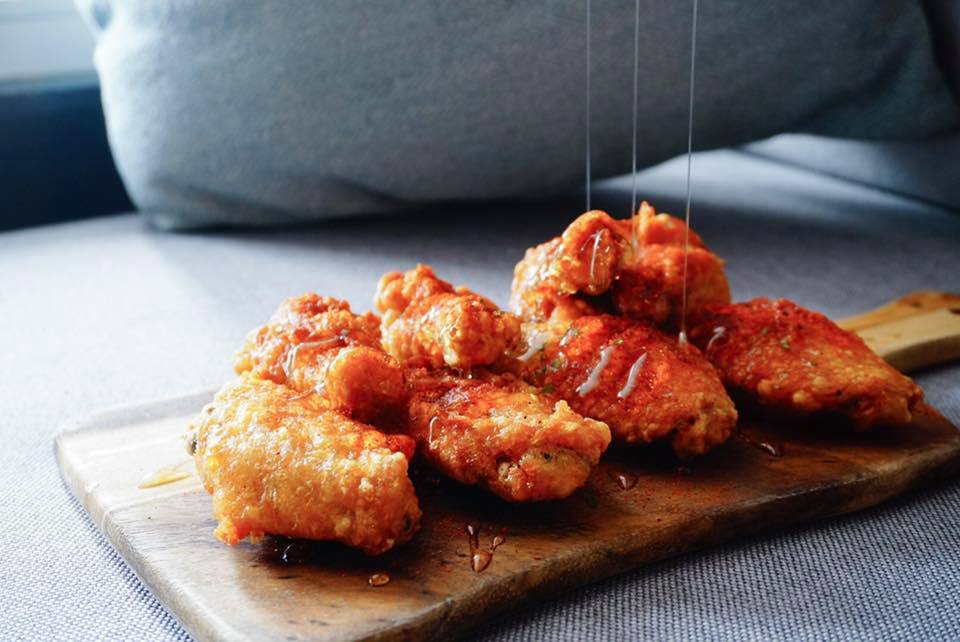
But even when the stars align, the heavens smile, and everything comes together in a holy trinity of flavor, juiciness, and crunch, context still matters. Just as the sword of Godric Gryffindor can only be taken under conditions of need and valour, fried chicken can only be fully enjoyed under certain very specific conditions. Fish soup demands cold weather, coffee requires quiet mornings, and fried chicken is best enjoyed in times of stress.
Hear me out before you cry ‘bullshit’ and let slip the dogs of war.
Fried chicken is comfort food. Fried chicken is familiar and soothing because unlike, say, an aged T-bone steak or a steamed grouper, it makes no pretensions to culinary art and does not demand that you applaud its subtle aroma or the chef’s inspired use of star anise. Fried chicken is all about YOU and what you want in this moment, which is more often than not, to find solace in a rush of salt and fat, unmediated by utensil use.
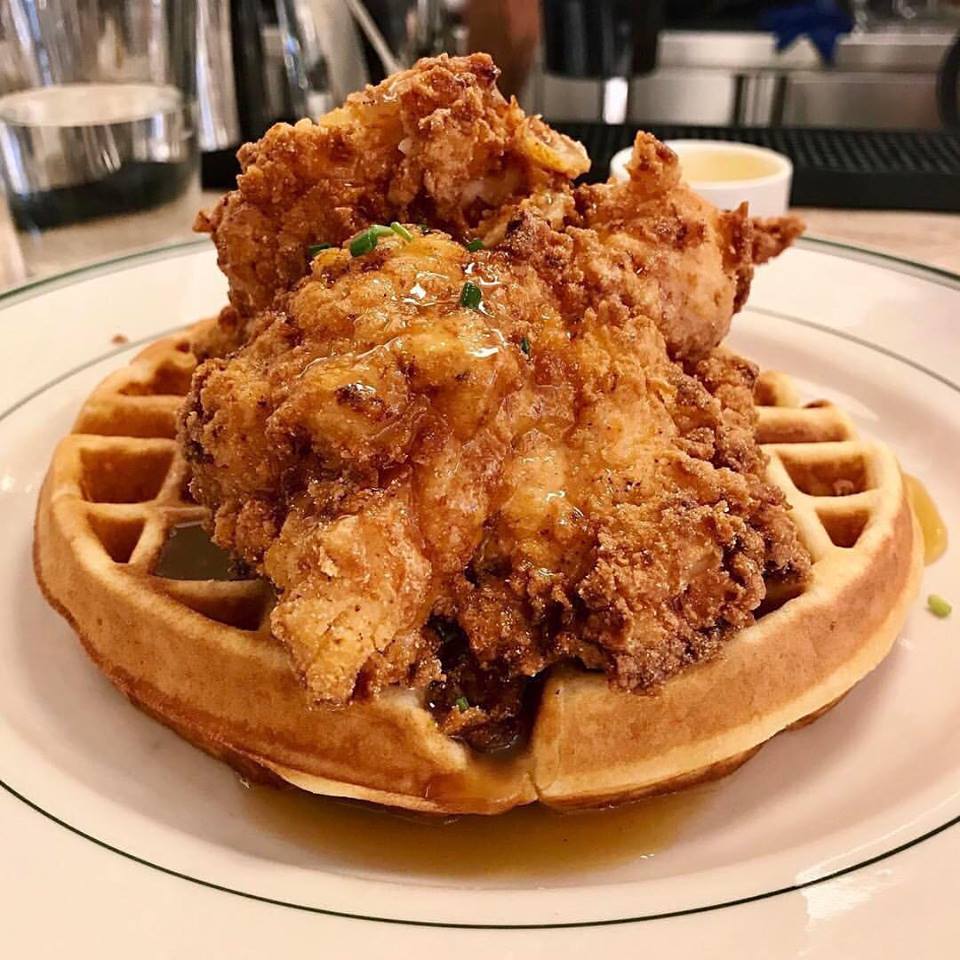
This is not to say you cannot enjoy fried chicken without a break-up or a hard day’s night. I just think that one’s enjoyment of fried chicken is magnified by difficult circumstances. Emotional distress cuts through the guilt of unhealthy eating like acid through fat, turning indulgence into self-medication, a very very delicious form of self-medication.
So it goes for the best fried chicken I’ve ever had—which was in 2016, during my final semester of University.
I was about to graduate, desperate to find a job in the UK, and the future loomed like a colonoscopy appointment. I spent about 12 hours a day studying anxiously in the library and on my days off, I would plaster a smile on my face to attend job interviews, assessment centres, and networking sessions, laughing mirthlessly at the jokes of hiring managers who would later send copy-pasted rejection emails ‘thanking me for my interest’.

In that most shitty year, when nothing I did was good enough to pass muster, fried chicken never tasted so damn good.
Whether it was a long day in school library or an even longer day getting deep-fried by Deloitte’s HR department, it felt good to rip off that straitjacket of a suit and bury my sorrows in a box of spicy chicken drumlets (chased with mashed potato). Tearing into that chicken batter was like stepping into a hot shower or the first sip of a cold beer, a sensation so blissful yet so simple that you can never tire of it. No matter how jaded or how neurotic you are, fried chicken will carry you to Valhalla on a magical river of grease, salt, and cayenne.
Yet fried chicken is not just high-cholesterol chemical pain relief for stressed-out souls. It is an antidote to modern ‘foodie’ culture.
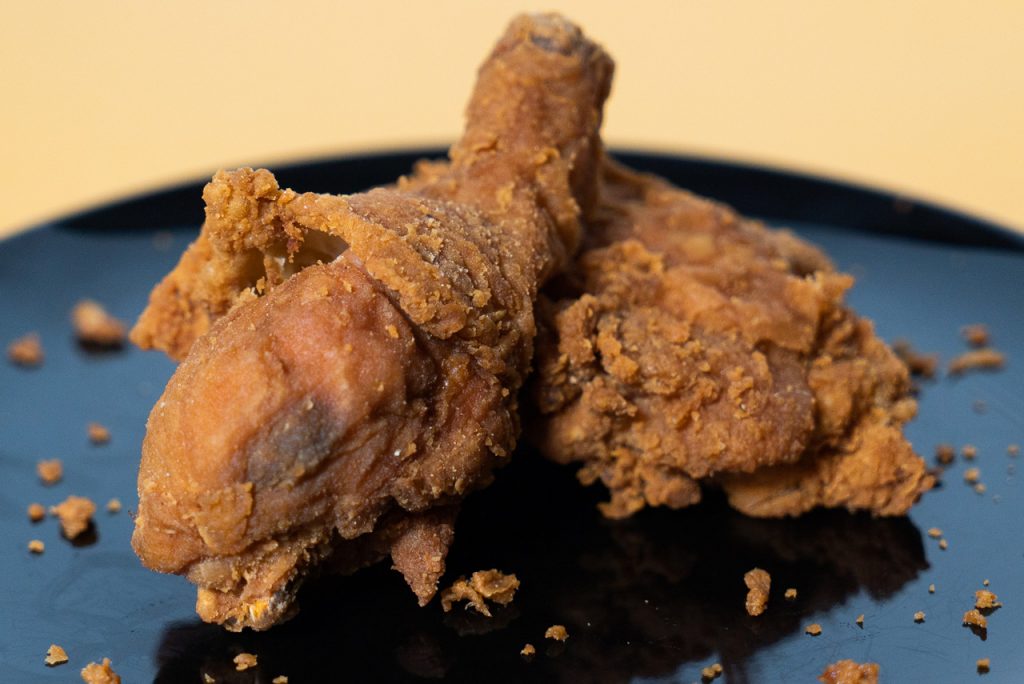
There is something very primal about the act of munching chicken pieces. Unlike a burger or a plate of char kway teow, you cannot look at fried chicken without recalling the animal that died for your pleasure. You also cannot eat it with a fork or chopsticks or with any civilising utensil.
There is no way to enjoy it except by going full caveman, diving in face-first with bared teeth, tearing the meat with incisors, just as our mammoth-hunting forefathers once did.
When you bite into a chicken thigh, you reconnect with the inner Neanderthal who just wants to kill fuck eat. You are no longer an entrepreneur-growth-hacker-multi-hyphenate with an image to maintain and a pecking order to climb. You are just a caveman with a stick of meat.
Caveman hungry. Caveman eat.
This culinary fundamentalism can be incredibly comforting in a complicated world where more possibilities often means more anxiety. It’s nice—refreshing even—to be reminded that in the end, we are just beasts chewing on the corpses of other beasts.

Deep-Fried Miracles
So, is it any wonder then that fried chicken is eaten and enjoyed by almost every culture around the world? Barring religious or dietary reasons, I’ve yet to visit a country without some local spin on fried chicken.
In London, chicken shops selling cheap 2-piece meals have slowly taken over the fish-and-chip shops of old. Instead of getting your dinner from some English bloke frying haddock, you’re more likely to be eating HFC (Halal fried chicken) served by a muslim bruv.
Austria has schnitzel, the Philippines has Jollibee, Korean has that extra-crispy double-fried chikin. Japan has Karaage in addition to KFC for Christmas, and don’t get me started on Africa or China, who has fallen so hard for fried chicken that it became a national health crisis.
This is because fried chicken is a perfect food— the Sistine chapel of mankind’s gastronomic achievement, a friend for good times and bad. Whether you are happy or sad, eating alone or feasting together, Fried chicken makes everything better.

Nothing gold can stay, they say. Nothing except fried chicken. Long may it reign.





